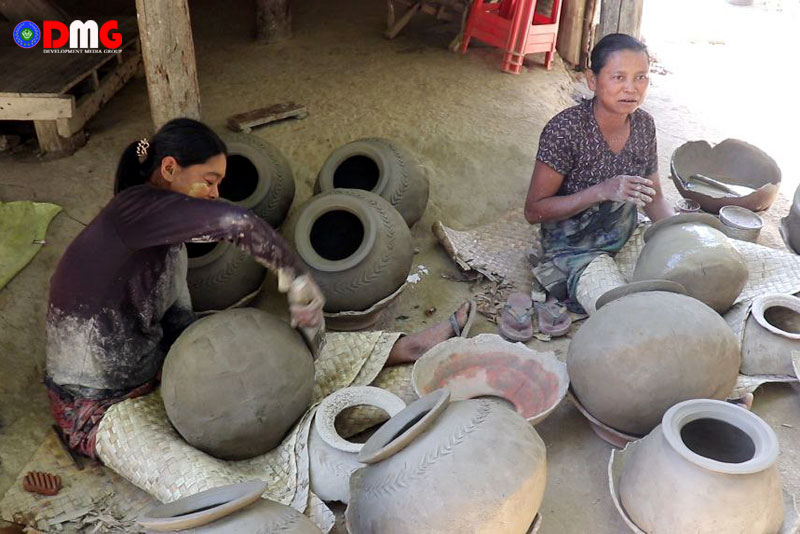- Junta unable to hold elections in dozens of wards and village-tracts in Sittwe, Kyaukphyu
- Fighting escalates between Myanmar military, Arakan Army in Ayeyarwady Region
- Regime steps up civilian arrests in Sittwe
- ULA safeguards Mrauk-U's ancient heritage
- Arakan on the Edge: What the DMG Landmine Impact Report Reveals About Myanmar's Deepening Humanitarian Crisis
Pottery industry wanes in Arakan State
The pottery industry in Arakan State used to churn out various types of pottery including stoves, flower vases, cooking pots and water pots.
07 Mar 2023

DMG Newsroom
7 March 2023, Sittwe
The pottery industry is struggling in Arakan State due to the limited availability of raw materials and a shortage of labour, as well as low demand, according to local potters.
Many potters have quit the industry as they can’t compete with plasticware, said Daw Thein May Chay from Ngatauktugyi Village in Rathedaung Township, who had engaged in pottery making for more than two decades before she quit.
“I am doing this [quitting] because it is tiring and the profit is too small to make a decent living. And, it is also difficult to find labourers. So, I have stopped production. And people are not using clay pots anymore. They are using plasticware instead,” she said.
The pottery industry in Arakan State used to churn out various types of pottery including stoves, flower vases, cooking pots and water pots.
But these days, they have been replaced by gas stoves and plastic bottled water, and the local pottery industry is thus on the wane.
The pottery business was mainly found in Rathedaung, Sittwe, Kyauktaw, Minbya and Myebon townships, and many pottery shops there have stopped production for various reasons.
“Because they don’t earn much money from this business, they go and work overseas, which has led to a shortage of labourers who would otherwise prepare the clay. And we can’t afford to hire skilled workers from other villages,” said U Tun Win from Tumyaung Village in Kyauktaw Townhip, who has engaged in the pottery business for more than three decades.

Production has steeply declined, from around 60,000 pieces of pottery to around 20,000 now due to above-mentioned factors, as well as shortages of certain types of clay used in pottery making.
“Clay pots do not fetch good prices. So, we only get small profits. And our production has declined by half because of the shortage of certain types of clay,” said Ma Pauk Hla from Ngatauktugyi Village.
Water pots only fetch 150,000 kyats for 100 pieces, and clay stoves only fetch 60,000 kyats for 100 pieces. Local potters said they are concerned that the industry will eventually vanish.
“This business does not make profits. If the government provides loans, young people might be interested in this business, and so the industry may survive,” said U Maung Soe Win from Tumyaung Village.
Currently, only Tumyaung Village engages in pottery as the bulk of its residents’ main source of livelihood, with other townships producing on a relatively small scale.

















